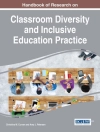Tap water enables the development of cities in locations with insufficient natural resources to support such populations. For the last 200 years, New York City has obtained water through a network of nineteen reservoirs and controlled lakes, some as far as 125-miles away. Engineering this water system required the demolition of rural communities, removal of cemeteries, and rerouting of roadways and waterways. The ruination is ongoing. This archaeological examination of the New York City watershed reveals the cultural costs of urban water systems. Urban water systems do more than reroute water from one place to another. At best, they redefine communities. At worst, they erase them.
قائمة المحتويات
Introduction
Urban Water as an (Un)natural Resource
Archaeology’s Unique Perspective
Book Outline
Chapter 1. Archaeology and the Contemporary Past
Past, Present, Future
Archaeological Method and Theory
Connections and Conclusions
Chapter 2. New York City’s Water System
Starting on Manhattan Island
Reaching Off-Island
Acquiring More Distant Lands
Connections and Conclusions
Chapter 3. Kent: A Town Repurposed
Introduction
History
Archaeology of City-Owned Lands
Connections and Conclusions
Chapter 4. Olive: A Town Traumatized
Introduction
History
Archaeology of City-Owned Lands
Connections and Conclusions
Chapter 5. Water Pasts for Water Futures
An Archaeology of Watershed Communities
Archaeologists as Effective Activists?
Conclusion
Bibliography
عن المؤلف
April M. Beisaw is an Associate Professor of Anthropology at Vassar College in Poughkeepsie New York. Since publishing Identifying and Interpreting Animal Bones: A Manual, with Texas A&M University Press, April has focused on the archaeology of the recent past. Her work on the impacts of the New York City water system on contemporary watershed communities has appeared in the International Journal of Historical Archaeology and as a chapter within the volume Contemporary Archaeology and the City: Creativity, Ruination, and Political Action.












